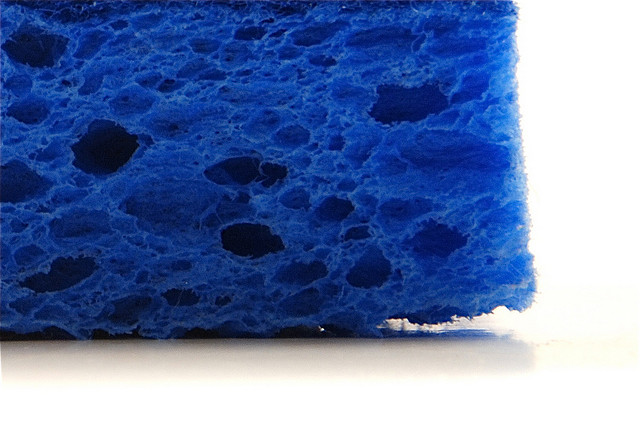Kitchen sponges are a breeding ground for bacteria. You have to think, your sponge lives by the sink—a wet area that harbors germs. Not to mention, the holes within a sponge are dark, porous and…needless to go on, your kitchen sponge is filthy of ickiness that doesn’t belong around your dishes!
It’s a good idea to designate your sponge for one use only… such as using one to wash the dishes with and another one to wipe down your countertops. Now, some people do wash their kitchen sponge in their dishwasher, but your dishwasher doesn’t get hot enough to kill the bacteria; the inside of your sponge needs to reach boiling temperature for that. So here’s what ya need to do:
- Fill up a bowl halfway with a diluted white vinegar and water solution; soak your kitchen sponge in it for 5-10 minutes. This helps with disinfecting and getting rid of any funky odors.
- Next, remove your sponge, and place it in your microwave on high for 2 minutes. Keep an eye on your sanitizing sponge until your time is up. If you want, place your sponge in a shallow microwave dish of water. Note: You’ll want to make sure your sponge is soaking wet—a dry sponge will results in flames & an awful smell.
- Now, your sponge is going to be extremely hot; allow it to cool in your microwave before you handle it. When you go to remove the sponge, use a heat-resistant silicone oven mitt so you don’t burn yourself.
Awesome…you just killed 99% of germs in that sponge of yours.
This quick sanitation trick can only be applied to sponges. No metallic materials, scrubbers or steel wool should ever go in your microwave. You should regularly clean your sponges depending on how much you cook. If you cook A LOT at home, you may find yourself microwaving your sponge every other day, or a couple times a week. Microwaving your sponge will not make it last forever, so it is best to replace it every 3-4 weeks depending on your use.
Photo by gosheshe | Flickr






